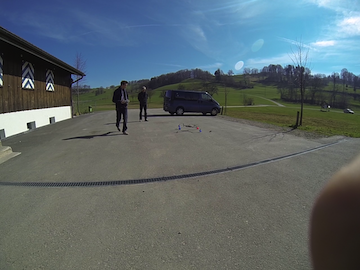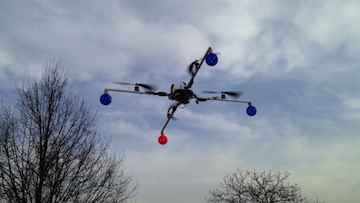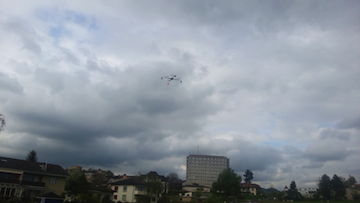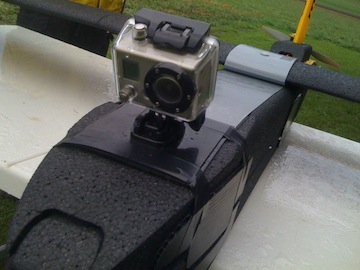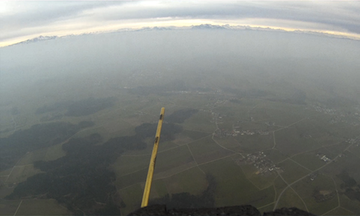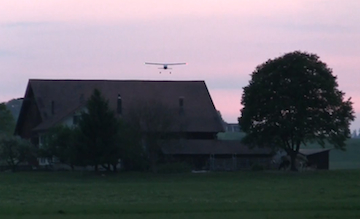User:Bruzzlee
About Me
Location: Switzerland
My Hardware: Lisa M v1.0 incl. Aspirin IMU v1.5 Odonata
Hardware: (Bachelor thesis) Tiny 2.11 incl. ArduIMU, Borjet Maja, Mentor UMARS
Downloads
I have some problems with git, so I packed the important files to a zip file with a little HowToUse PDF.
- Contents:
- "On the fly" switch-able Airspeed-Control loops
- Modes:
- 0 - Standard
- 1 - Vassillis
- 2 - Airspeed Pitch Climbrate
- 3 - Airspeed Pitch Simple
- 4 - Airspeed Manual Power
- 5 - Airspeed Pitch Acceleration
- See Airspeed_Control_Loops.pdf for Matlab views
- Modes:
- AMSYS I2C Airspeed-Sensor module
- AMSYS I2C Baro module
- ADC Sonar Module
- Our Airframe
- Autonomous launch and landing (ZHAWnav)
- Angle of attack sensor
- "On the fly" switch-able Airspeed-Control loops
GIT
-->Here<-- I am working on the publication of our source.
Feel free to modify it, if there is something wrong.
Send a request if you want me to upload something extra.
- Contents:
- 5 different Airspeed-Control loops (not all are tested!)
- Airspeed scales in setting-file
- Example Airframe
- Amsys-Airspeed I2C Sensor module (on optimizing)
Project thesis
Bachelor thesis
- Language: German
- Contents:
- Airspeed control systems
- Autonomous launch and landing
- Angle of attack sensor
Abstract: A drone named UMARS was developed at the ZHAW for atmospheric research flights. An autopilot based on the open source project Paparazzi was developed in former projects in order to enable the use of the drone by personal with no model-flight experience. Thus, in this project an existing air-speed control strategy was further developed using now a Prandtl probe and a differential pressure sensor. New autonomous launch and landing procedures were also implemented successfully in this project. To avoid disturbances of the Inertial Measurement Unit (IMU) caused by the acceleration during the launch, an angle-of-attack sensor was mounted on the drone, which has improved clearly the flight attitude relative to the air flow. An accurate measurement of the drone's height during the landing approach is necessary. An ultrasonic sensor was specified to accomplish this task.
My Project thesis
It's a project thesis which we wrote about our first steps with Paparazzi.
- Language: German
- Contents:
- "New" Paparazzi File structure
- Analysis of various Control-Loops
- Detailed Airspeed-Control analysis
- Airspeed Sensor (ADC) (How to activate a analogue Airspeed Sensor)
- Various flight tests
- Adaptive Airspeed Control suggestions
- How to write a "Driver"
- Idea of a short Check-list
- How to "Flash"
- Hardware: Tiny 2.11 incl. ArduIMU, Borjet Maja
Project thesis I've referenced to
This project thesis describes the first steps with the Paparazzi-Project. (Outdated Source Code)
- Language: German
- Contents:
- Block diagram
- Tiny V2.11
- Diagram of the Control Boards
- IR sensors
- Gyro
- Accelerometers
- IMU
- 2.4 GHz RC control and paparazzi link
- Order list
- Software Installation
- Additional cables and connectors
- Paparazzi start
- GUI
- Operation modes
- Configuration files
- GCS
- Hardware: Tiny 2.11 incl. ArduIMU, Borjet Maja
File:Paparazzi Autopilot Bericht Syat.pdf
Bachelor thesis I've referenced to
This bachelor thesis describes further steps with the Paparazzi-Project. (Outdated Source Code)
- Language: German
- Contents:
- Commissioning of the test aircraft with the autopilot
- Inertial Measurement Unit for position control
- Speed and altitude control
- Barometer AMSYS AMS 4711 - 1200 B
- Differential pressure sensor AMSYS AMS 4711 - 0020D
- Vassilis-Airspeed
- Airspeed One
- Airspeed Two
- Present state of the software / hardware
- Hardware and software design of paparazzi
- The I2C interface
- ArduImu
- Hardware: Tiny 2.11 incl. ArduIMU, Borjet Maja
Media
Odonata
1st hover flight - Quadrotor Odonata
2nd flight - Quadrotor Odonata
GPS hover flight - Quadrotor Odonata
Maja
Altitude flight with Borjet Maja (new ArduIMU-Firmware)
